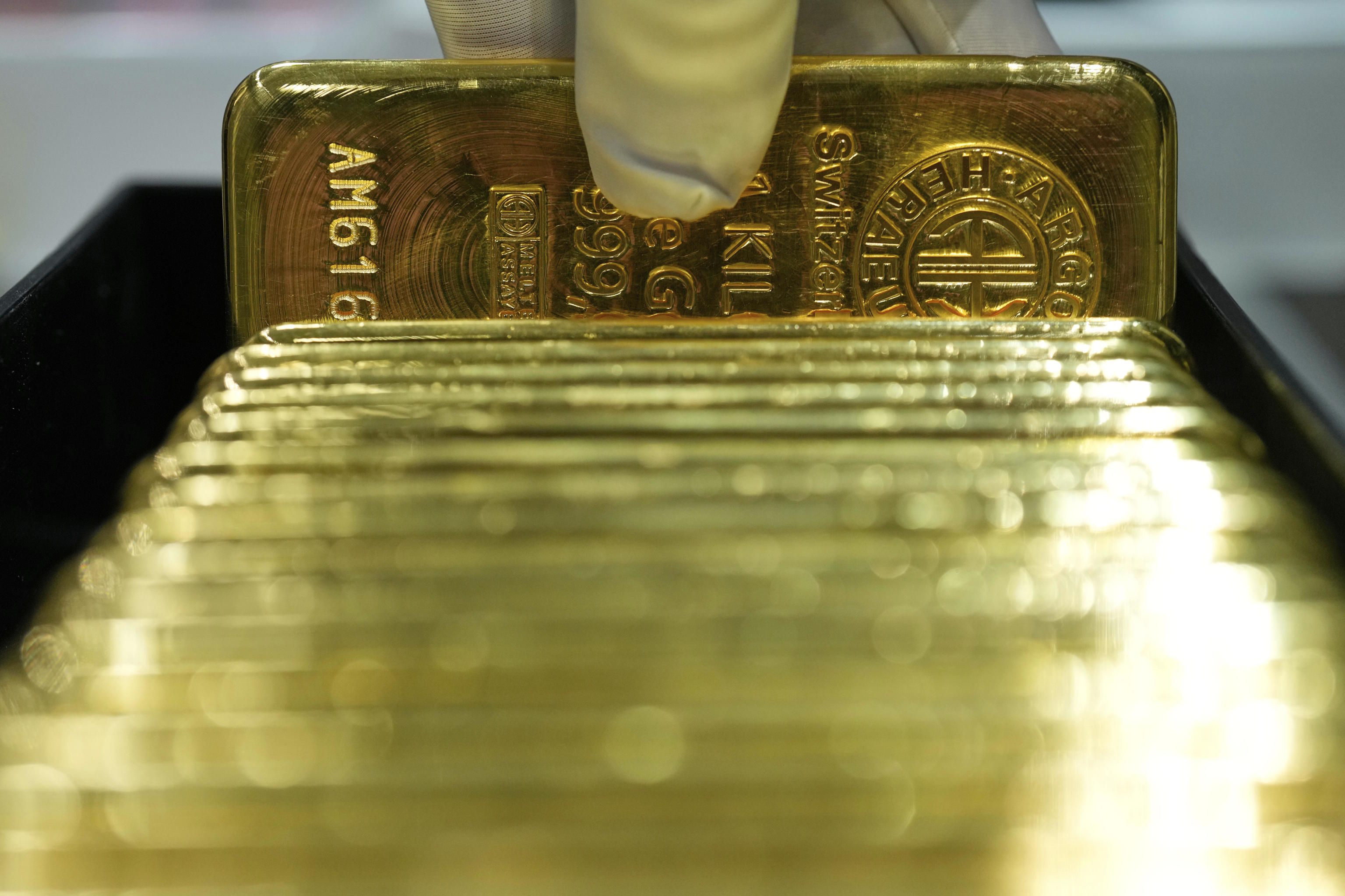An example of high speculation in the gold market occurred last Tuesday when it reached a new record of 3,500 dollars per ounce after renewed attacks by the US President, Donald Trump, on a key institution such as the Federal Reserve and China. But it dropped more than 2% the next day because Trump himself denied wanting to dismiss his central bank president, Jerome Powell, and showed signs of negotiation with Xi Jinping. And this is how the market evolves in these weeks. Every piece of data that adds disorder - as if the Russian aggression in Ukraine were not enough - in the world's leading economic power stimulates the value of gold, and every piece of data that reduces uncertainty cools it down, but still within record levels.
The strengthening of gold as a safe haven asset is one of the unusual consequences of Trump's return to the White House. His absurd trade war and offensive against the foundations of the US economy have caused his major assets, such as public debt and the dollar, to lose attractiveness as a traditional safe haven asset, favoring the historical wildcard in any uncertain situation in the world: gold.
A striking effect is evident in the balance sheet of the Bank of Spain, among other central banks: the record revaluation of its historical reserves. The Bank of Spain permanently holds "9,054 million troy ounces of fine gold" which, since Trump's arrival, have surpassed 25,000 million euros in recent weeks, according to official data from the institution led by José Luis Escrivá. There have been days in April when it even exceeded 27,000 million. This is double what they were worth in the year of the pandemic and triple the 8,811.34 million euros they were valued at in 2015. The latent capital gain is around 2,800% over the old price at which the Bank of Spain bought this gold. The institution does not provide acquisition dates for this metal in the past two centuries, but confirms that the cost price equates to 850 million euros taking into account also the cost of storage.
What will they do with such a capital gain? So far, it is just an accounting note because the Bank of Spain, part of the Eurosystem, maintains reserve stability, neither buying nor selling, although adjusting its gold to market value on the balance sheet. The institution points out that if there were losses (the price would have to plummet significantly), they would have to record losses, but not the other way around unless they sell gold . Its reserves equivalent to 280 tons are already the lowest among the central banks of the top European economies - after the strong sales two decades ago coordinated with the ECB, from which, given the current situation, the Bank of Spain could have obtained much more - and they will continue to do so, in principle, due to the passive stance maintained by all Eurosystem members in the gold market.
This contrasts with the fever of central banks in emerging economies from other areas of the world that have rushed to increase reserves of the precious metal to strengthen their balance sheets, contributing to its revaluation. "The main driver of gold demand is central banks, which are increasingly trying to move away from the paper currency system and allocate gold as a reserve. I believe this trend will not change," said Wall Street financial shark, billionaire John Paulson, who is also a donor to Trump's election campaign.
A market leader like Goldman Sachs also predicts that, despite fluctuations, gold could end this year between 3,500 and 3,900 dollars per ounce, considering the aforementioned demand from central banks and always depending on the risk of recession. Their range sets a record not only in nominal terms but real terms, surpassing the 850 dollars per ounce mark recorded in January 1980, which, adjusted for inflation, investors liken to around 3,500 current dollars.
For now, the Bank of Spain states that these revaluations are accounting balances, but they help to "absorb the impact of future unfavorable price or exchange rate movements, strengthening the Bank of Spain's ability to face risks." In its latest report for 2024, it already acknowledged a revaluation of 5,800 million in just one year, reaching 22,734 million.
What will they do with the gold in the future? Official sources decline to comment on future strategy. The global uncertainty is such that it remains to be seen whether it will lead to a new policy by European central banks regarding gold, the old and forgotten major asset that, who would have thought, has become a speculative trend once again at this stage.
